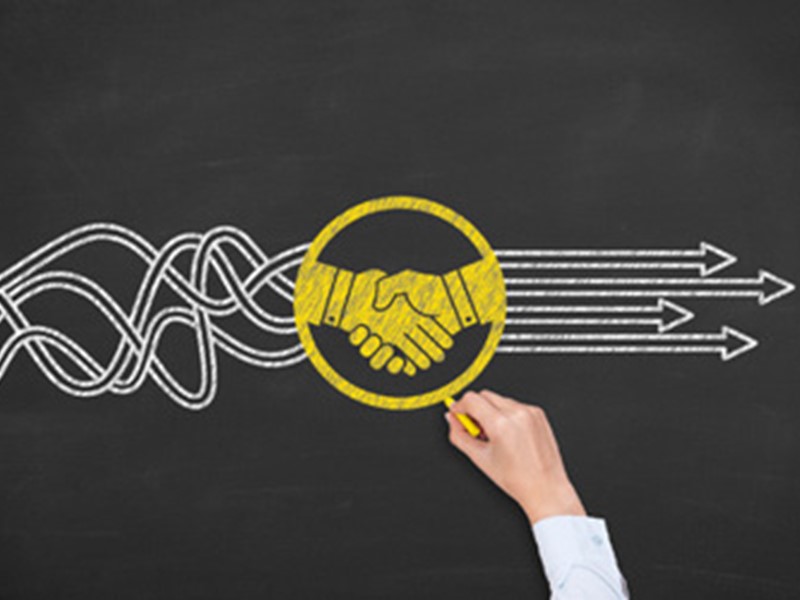Want To Have A Real Impact? Start With The 4 A's Of Marketing

by Jon Howland, CEO of Life Science Connect
In my early days in B2B marketing, when print magazines ruled, I recall reading a short essay on the 4 A’s of Advertising. What struck me at the time was the essay’s focus on the buyer. It was among one of the first articles I read that captured the buyer perspective instead of the seller perspective. These days, there are many good reads that focus on what the buyer goes through. Here at Life Science Connect, we are big fans of The Challenger Sale, The Challenger Customer, Selling to the C-Suite, Follow Your Buyer, and the Edelman/LinkedIn Thought Leadership Impact Studies.
Yet we still see marketing and sales teams who expect to be able to shortcut the process and have a buyer go right from first contact to sale. It just doesn’t work that way, especially in the complexities of the B2B Buyer’s Journey. In fact, you will see many examples of the “Seller’s Journey” passed off as the Buyer’s Journey – make them aware, get them to show interest, convert them. To have a positive impact on the buyer, it helps to understand what mental steps they go through before they can even think about buying your product or service. The 4 A’s can help us to better understand the buyer experience or journey.
The 4 A’s
These are the four steps a buyer takes to make a purchase from a supplier. There is no tricking this process as it is just how we humans are wired. The 4 A’s are Awareness, Acknowledgement, Acceptance and Action. Here is a simple way to think about them:
Awareness – I have heard of that company
Acknowledgement – I know what they do
Acceptance – They are good at X
Action – I would/did buy their product/service
How to Maximize Your Impact in Each Stage
Success in positively impacting the buyers mental process is based on three key elements. They are frequency, consistency, and quality. If you apply these three elements to your marketing execution, you will maximize your marketing effectiveness.
Awareness
Awareness is driven mostly by frequency and consistency, and to have an impact, you must be committed to it. There are studies that show a human needs a minimum of five exposures to something for it to simply register in their subconscious. It requires many more exposures to be top of mind. Consistency roots awareness deeper into the mind of the buyer as humans tend to forget quickly until something is stuck in their mind. A common challenge I hear from both sales and marketing teams is “nobody knows who we are.” Those companies have either failed at frequency, consistency, or both in their messaging.
A marketer can impact this through traditional means such as public relations (PR) or display advertising, although it is often difficult to maintain both frequency and consistency with PR; announcements or interviews are difficult to sustain with frequency. PR can be a really good kick-starter tactic, but you lose everything you invest if you do not follow it up with other forms of marketing. Frequency and consistency with advertising can build and maintain good awareness – think about your favorite soda or pizza chain – but is limited in depth to build a lot of acceptance. Trade shows and conferences are not great for awareness unless you can afford to do them every week. Content marketing, which is gaining widespread use, can be executed in ways to build awareness with easy transition into Acknowledgement.
Acknowledgement
Transitioning the buyer from Awareness to Acknowledgement also requires frequency and consistency but needs to incorporate a higher level of quality in the messaging. It does not have to be too deep to get to this point, just educational enough for buyers to get an idea of what you do, your product or service, and, ideally, the problem you solve. PR starts breaking down here due to the lack of frequency and consistency, as do trade shows and conferences. Traditional advertising can help here but has limited depth in explaining what a supplier does. Content marketing helps to add some depth of understanding what the supplier does.
Acceptance
Acceptance is the most difficult element in the set. You cannot get it without Awareness and Acknowledgement, but a supplier can have good Awareness and Acknowledgement, yet still struggle with Acceptance. Acceptance is a deeper mental state than the first two. It goes beyond recognition and depends mostly on a “what is in it for me” thought process. The supplier can control Awareness and Acknowledgement through frequency and consistency, but the buyer has more control over Acceptance. At this stage, quality is of utmost importance. To be effective at quality, the supplier needs to know what is important to the buyer, the problems they have, challenges they face, and outcomes they desire. Messaging that focuses on helping the buyer solve their problems satisfies the buyer’s deeper “what is in it for me” requirement. Notice I did not say “what you can do for the buyer,” rather “how can we help them.” There is a big difference in the buyer’s mind between the two. If you understand them enough to provide real help, you will see a noticeable impact.
Frequency and consistency are still of utmost importance, but quality rules the day in building acceptance. You will hear suppliers discuss providing “thought leadership”. These suppliers understand the need to build acceptance with their buyers. However, thought leadership works for some but not for others. Why? Quality. Those who fail focus more on what they do, while those who succeed focus on what the buyer needs, which builds acceptance. If you show you can satisfy the buyer’s needs, they can then move to the final stage, Action.
Action
A mistake B2B sales and marketing teams make is thinking a demand generation program can produce Action on the buyer’s part. If you have built good Awareness, Acknowledgement and Acceptance, the demand generation programs can do just that. If you try to skip or fast forward through the first three A’s, you will only end up with “leads” that cannot be closed, or even engaged with. While marketing tactics like PR, advertising, and trade shows can help fill in parts of this process all buyers go through, they each have limits. Content marketing, done frequently and consistently over time with high quality focus on the buyer, has shown to have a great impact on helping buyers mentally go through those four stages of human decision-making, the 4 A’s.
 About the Author
About the Author
Jon Howland is the CEO at Life Science Connect. He has served in a variety of leadership roles in B2B publishing organizations for almost 30 years. It is his life’s work.
Originally published on Follow Your Buyer on 11/18/21
Let's work together.
Whether you're ready to hit the ground running or just starting and have questions, we're here to understand your goals and explore how we can help you.